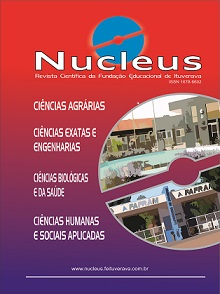MORPHOPHYSIOLOGICAL STAGE IDEAL FOR GRAFTING IN NET MELON ‘BONUS N° 2’
DOI:
https://doi.org/10.3738/1982.2278.1172Keywords:
Cucumis melo var. reticulatus Naud, fenda cheia, porta-enxerto, cultivo protegido, mudasAbstract
The intense cultivation of the melons in greenhouses has caused the rise of serious problems involved with soil pathogens, making it necessary to use grafting as an alternative in crop management in this environment. The objective of the present study was to determine the ideal morphophysiological stage of melon plants ‘Bonus No. 2’ for grafting by the closed cleft method, utilizing as rootstock the pumpkin hybrid ‘Shelper’, and to see if it affects take rate and productivity and quality of the fruits. A completely randomized block design was used with five treatments and five repetitions, where each plot comprised eight plants. The treatments consisted of four different stages of development of the seedlings of net melon (scion): developed cotyledonary leaves; first leaf in development; second leaf in development; and two developed leaves. Non-grafted plants served as the control. The non-grafted plants showed better values for rind netting, rind thickness and soluble solids. When compared to the graft treatments, there was no significant difference regarding the characteristics evaluated. If there is a need for grafting because of soil pathogens and salinity, the utilization of scions with the first leaf in development is recommended since they show better values for rind yield and soluble solids at an early morphophysiological stage.Downloads
Published
2015-04-30
Issue
Section
Articles


